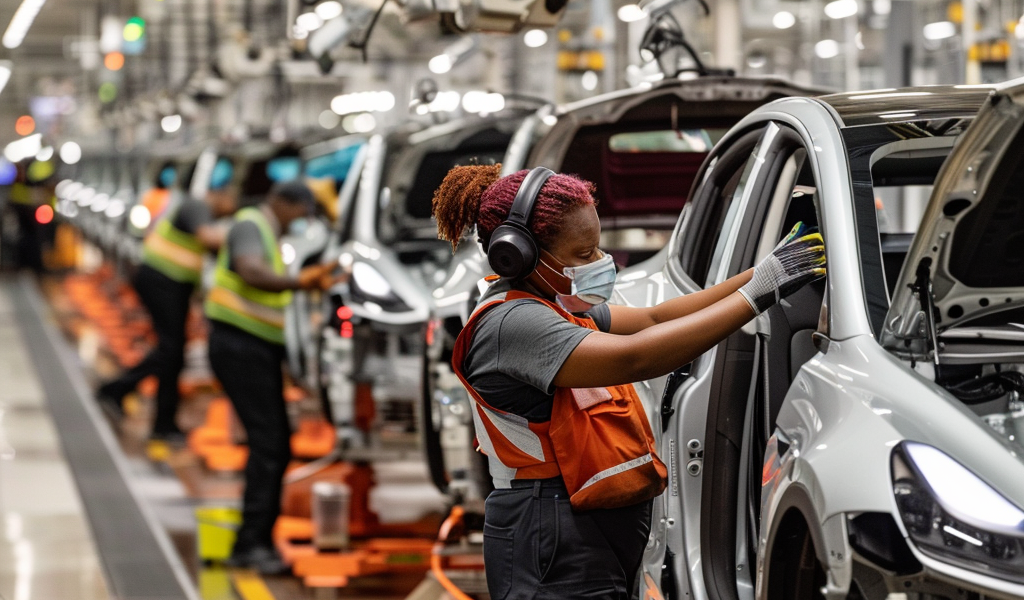In a move being hailed as one of the most significant climate rules in US history, the Biden administration announced on Wednesday new regulations on tailpipe emissions. The rule, which calls for a 56% reduction in fleetwide average carbon emissions by 2032, constitutes the strictest-ever limit on pollution from the nation’s cars and light trucks.
“Today, we’re setting new pollution standards for cars and trucks,” Joe Biden said in a statement. “US workers will lead the world on autos making clean cars and trucks, each stamped ‘Made in America.’ You have my word.”
The new standards do not mandate the sale of particular kinds of vehicles, but they all but ensure a dramatic increase in EVs over the next eight years. EVs made up just 7.6% of new car sales last year. But by 2032, the standards will mean EVs make up 35% to 56% of sales, according to the Environmental Protection Agency (EPA).
The new standards form one of the most significant pieces of the White House’s efforts to slash greenhouse gas emissions. Transportation is the largest source of planet-warming emissions in the US, and passenger cars and trucks account for the majority of that pollution.
By the time the rule is fully implemented in 2055, it will have cumulatively slashed more than 7bn tons of carbon dioxide emissions, senior administration officials told reporters on Tuesday. It will also tackle toxic pollution, they said, slashing fine particulate emissions by 95% and emissions of NOx and volatile organic compounds by 75%.
But the regulation has been weakened since it was first proposed last spring. The final rule would result in the same endpoint – a 56% reduction in fleetwide average carbon emissions by 2032 from 2026 levels – but the year-over-year tightening of the pollution standards between 2027 and 2030 will happen at a more gradual pace.
The change aligns with asks from auto manufacturers and the United Auto Workers. UAW, which has long been a powerful force in US politics, pushed for the changes to protect jobs in the auto industry. Biden’s administration has also faced pressure from auto manufacturers, who argued that the original proposal would have been too aggressive and could have led to job losses.





